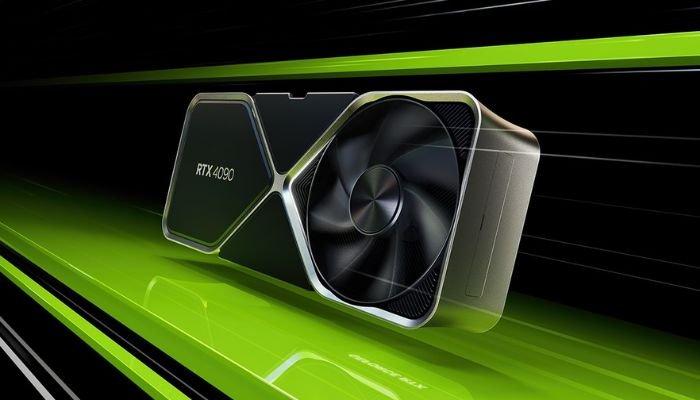RTX vs GTX: What’s the Difference in Nvidia Graphics Cards?
Understanding the generations, features, and performance of Nvidia’s two major GPU lines

If you’re looking to build or upgrade a gaming PC, you’ve likely encountered Nvidia’s GTX and RTX series graphics cards. While both belong to Nvidia’s GeForce family, there are critical differences in architecture, features, and performance that separate the two. This article breaks down RTX vs GTX to help you make an informed choice based on your gaming needs and budget.
GTX Meaning in Graphics Card: What Does It Stand For?
Let’s start with the basics. GTX stands for Giga Texel Shader eXtreme. It has been Nvidia’s branding for high-performance GPUs since the GeForce 7000 series. Cards like the GTX 960, GTX 1060, GTX 1660, and others were widely adopted by gamers for their affordability and solid performance in 1080p gaming.
So, when you see GTX in a graphics card, think of it as a performance-oriented GPU without ray tracing or AI-enhanced features. It focuses on traditional rasterization — the process of rendering images using polygons and textures — which still powers most of today’s games.
What Are RTX Graphics Cards?
RTX, on the other hand, stands for Ray Tracing Texel eXtreme. Nvidia introduced RTX branding with its Turing architecture in 2018, beginning with the RTX 20 series. These cards brought real-time ray tracing and AI-based image enhancement (like DLSS) to consumer gaming for the first time.
Today, RTX cards span multiple generations:
-
RTX 20 Series (Turing)
-
RTX 30 Series (Ampere)
-
RTX 40 Series (Ada Lovelace)
Each new generation brought performance improvements and feature upgrades, but all RTX GPUs support hardware-accelerated ray tracing and Tensor Cores for AI tasks.
RTX Graphics Card Features That Set It Apart
The biggest leap from GTX to RTX is in the feature set. Here are the standout RTX graphics card features that differentiate them from GTX:
-
Ray Tracing Cores
RTX cards include dedicated RT Cores for real-time ray tracing. This means games can simulate realistic lighting, reflections, and shadows by tracing rays of light — something GTX cards can only do via software, with poor performance. -
Tensor Cores for AI Tasks
Tensor Cores enable DLSS (Deep Learning Super Sampling), which upscales lower-resolution images using AI. DLSS allows you to enjoy high-quality visuals at higher frame rates. GTX cards do not support DLSS. -
DLSS 3 and Frame Generation
With the RTX 40 series, Nvidia introduced DLSS 3, which includes Frame Generation — a technique where entirely new frames are created using AI. This is exclusive to RTX 40 series GPUs and significantly boosts performance in supported games. -
Better Encoding and AV1 Support
Newer RTX cards (30 and 40 series) support AV1 video encoding, improved streaming quality, and better hardware support for content creators.
In short, RTX cards are built not just for gaming, but for future-proofing your setup for streaming, video editing, and AI-powered applications.
RTX vs GTX Performance: Head-to-Head
When it comes to RTX vs GTX performance, the gap is clear — especially in newer games or higher resolutions.
-
GTX cards like the GTX 1660 Super still offer decent performance in 1080p gaming but begin to struggle with ray tracing or heavy post-processing effects.
-
RTX cards, even entry-level ones like the RTX 3050, offer better frame rates thanks to DLSS and optimized architecture.
For example:
-
In a game like Cyberpunk 2077, the GTX 1660 Ti might run at 45–50 FPS at high settings (no ray tracing), while the RTX 3060 can push 60+ FPS at the same settings using DLSS.
-
In Control or Alan Wake 2, enabling ray tracing on GTX results in major frame drops. On RTX cards, ray tracing becomes playable with the help of DLSS.
Is GTX Still Good for Gaming?
If your focus is budget-friendly 1080p gaming, GTX cards can still offer strong value. Titles like Valorant, CS2, GTA V, FIFA, or Fortnite run smoothly on cards like the GTX 1650 Super or GTX 1660 Ti. These GPUs are still popular among entry-level gamers and second-hand buyers.
However, as games become more demanding and built around ray tracing and AI upscaling, RTX becomes increasingly necessary for smooth experiences.
So, GTX for gaming still works, but with limitations. RTX opens the door to higher visual fidelity, more stable frame rates, and modern gaming features.





